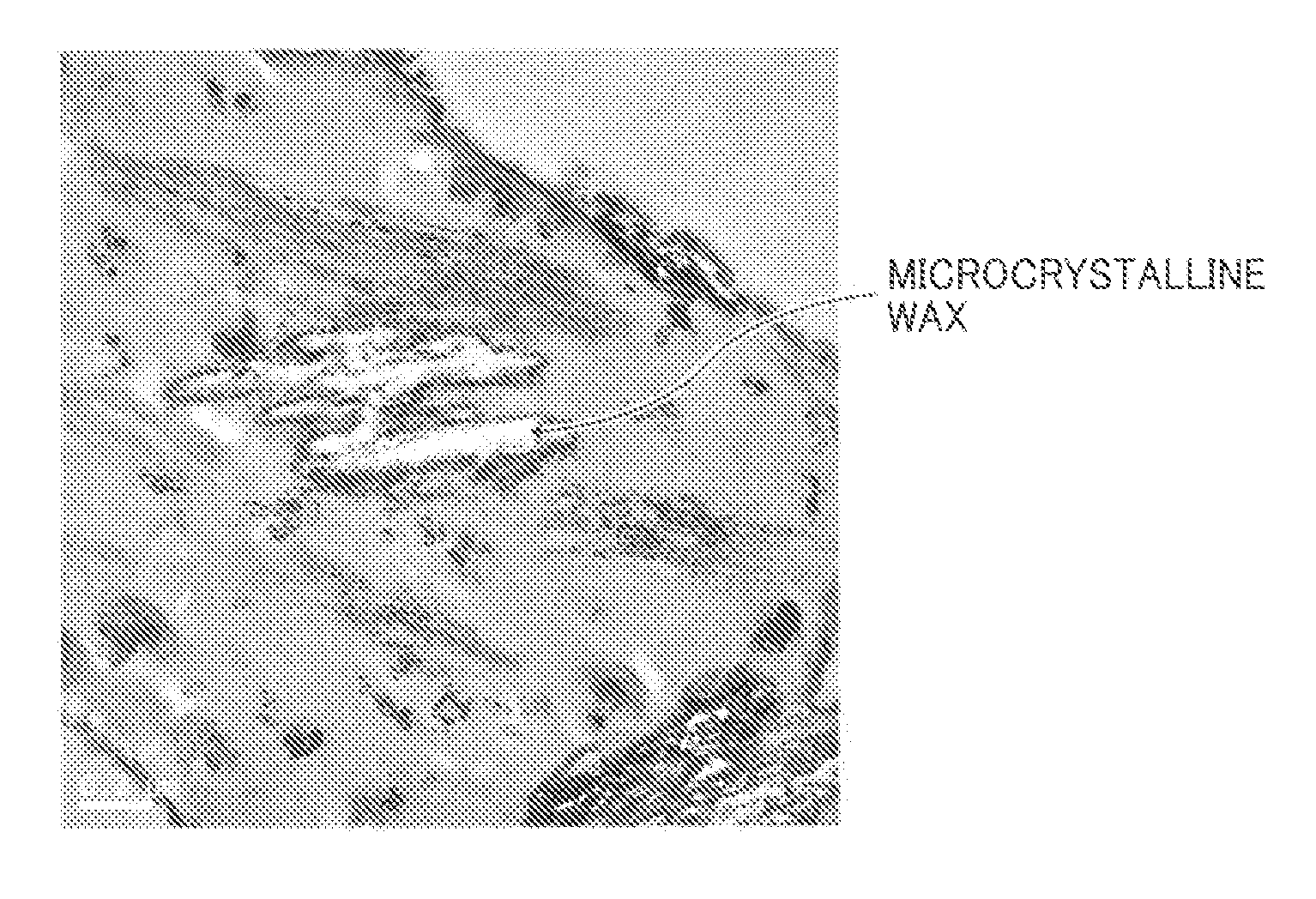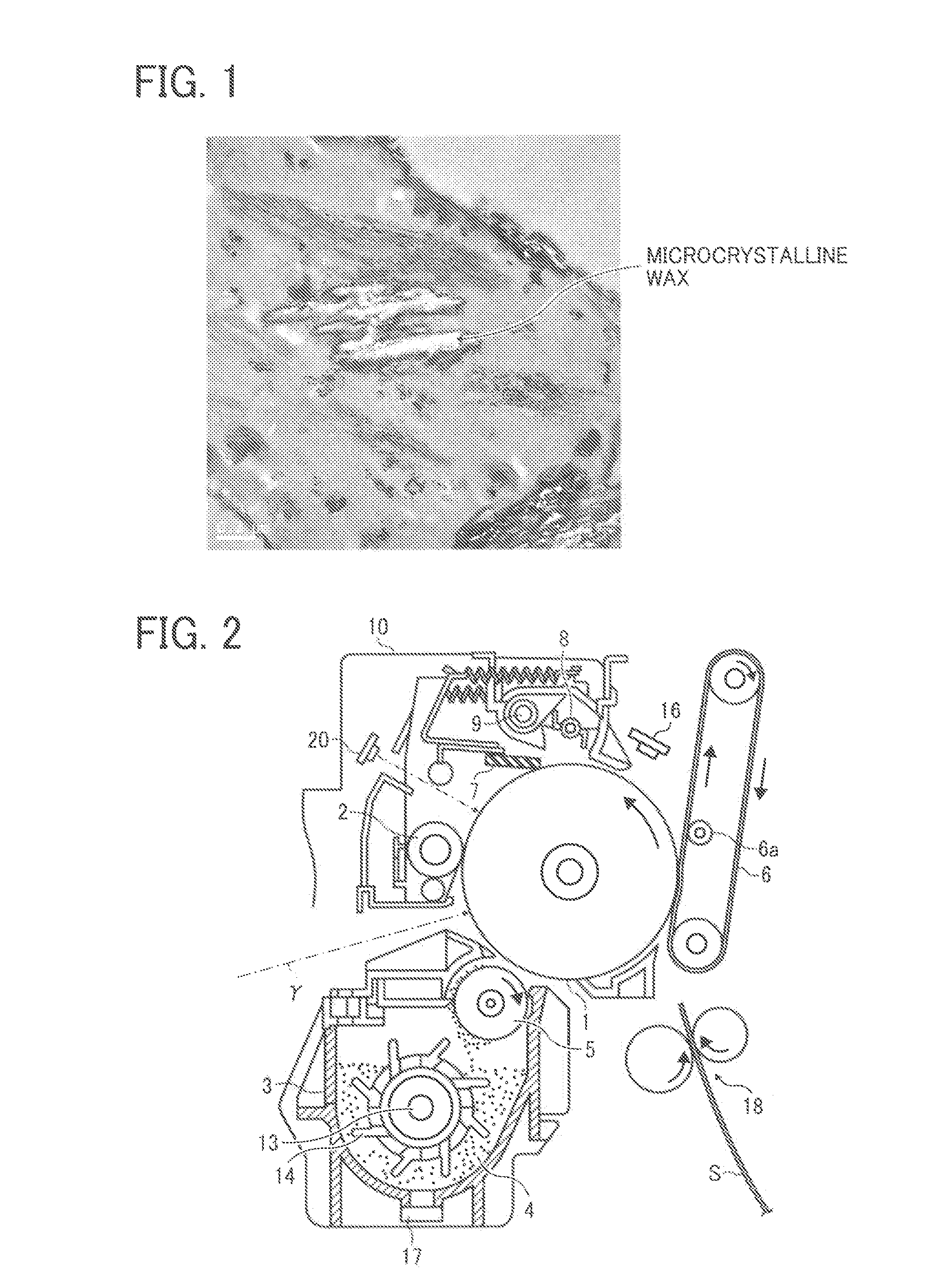Toner, developer, developer container, method of manufacturing toner, and image forming method
a technology of toner and container, which is applied in the direction of electrographic process, electrographic process using charge pattern, instruments, etc., can solve the problems of inability to meet the demand for high-quality images, irregular shape of toner particles manufactured through the pulverization process, and high cost of toner particles
- Summary
- Abstract
- Description
- Claims
- Application Information
AI Technical Summary
Benefits of technology
Problems solved by technology
Method used
Image
Examples
manufacture example 1
Preparation of Particulate Resin Emulsion
A reaction vessel equipped with a stirrer and a thermometer was charged with 700 parts of water, 12 parts of a sodium salt of a sulfate of ethylene oxide adduct of methacrylic acid (ELEMINOL RS-30 from Sanyo Chemical Industries, Ltd.), 140 parts of styrene, 140 parts of methacrylic acid, and 1.5 parts of ammonium persulfate. The mixture was agitated for 20 minutes at a revolution of 450 rpm, thus preparing a whitish emulsion. The emulsion was then heated to 75° C. and subjected to reaction for 5 hours. Thereafter, 35 parts of a 1% aqueous solution of ammonium persulfate were added thereto, and the resulting mixture was aged for 5 hours at 75° C. Thus, an aqueous dispersion of a vinyl resin (i.e., a copolymer of styrene, methacrylic acid, and a sodium salt of a sulfate of ethylene oxide adduct of methacrylic acid) was prepared. This dispersion was hereinafter called as the particulate resin dispersion 1.
Resin particles in the particulate resin...
manufacture example 2
Preparation of Aqueous Medium
An aqueous medium was prepared by mixing and agitating 1,000 parts of water, 85 parts of the particulate resin dispersion 1, 40 parts of a 50% aqueous solution of dodecyl diphenyl ether sodium disulfonate (MON-7 from Sanyo Chemical Industries, Ltd.), and 95 parts of ethyl acetate. Thus, an aqueous medium 1, which was whitish, was prepared.
manufacture example 3
Preparation of Polyester having Hydroxyl Group
A reaction vessel equipped with a condenser, a stirrer, and a nitrogen inlet pipe was charged with 235 parts of ethylene oxide 2 mol adduct of bisphenol A, 535 parts of propylene oxide 3 mol adduct of bisphenol A, 215 parts of terephthalic acid, 50 parts of adipic acid, and 3 parts of dibutyl tin oxide. The mixture was subjected to reaction for 10 hours at 240° C. under normal pressures, and subsequently for 6 hours under reduced pressures of from 10 to 20 mmHg. Thereafter, 45 parts of trimellitic anhydride were added thereto and the mixture was further subjected to reaction for 3 hours at 185° C. under normal pressures. Thus, a low-molecular-weight polyester 1 was prepared. The low-molecular-weight polyester 1 had a number average molecular weight of 2,800, a weight average molecular weight of 7,100, a glass transition temperature of 45° C., and an acid value of 22 mgKOH / g.
PUM
| Property | Measurement | Unit |
|---|---|---|
| melting point | aaaaa | aaaaa |
| dispersion diameter | aaaaa | aaaaa |
| dispersion diameter | aaaaa | aaaaa |
Abstract
Description
Claims
Application Information
 Login to View More
Login to View More - R&D
- Intellectual Property
- Life Sciences
- Materials
- Tech Scout
- Unparalleled Data Quality
- Higher Quality Content
- 60% Fewer Hallucinations
Browse by: Latest US Patents, China's latest patents, Technical Efficacy Thesaurus, Application Domain, Technology Topic, Popular Technical Reports.
© 2025 PatSnap. All rights reserved.Legal|Privacy policy|Modern Slavery Act Transparency Statement|Sitemap|About US| Contact US: help@patsnap.com


